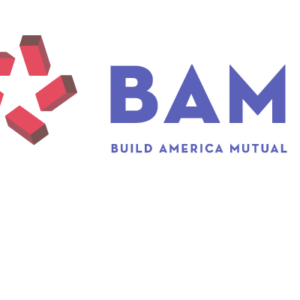America’s racial and ethnic demographics have become increasingly diverse over the past few decades. In response to these shifts, municipalities across the nation are working to ensure that elected officials and public administrators are representative of their constituencies to improve municipal service delivery. Taking steps to increase staff diversity can also lead to several benefits for local leaders, their workforces and residents, including improvements to organizational performance, organizational culture, employee retention, and residents’ trust.
Future of Cities
For more information on the future of cities and their workforce, check out NLC’s Future of Cities initiative.
To assist municipal leaders as they attract diverse talent, local governments must incorporate a diversity, equity, inclusion and accessibility (DEIA) framework in their recruitment and hiring processes. As municipalities incorporate a DEIA framework into their hiring procedures, understanding how the public sector workforce compares to the residents they serve is critical. Continuously reviewing how over- or underrepresented specific communities are across local government staff allows local leaders to determine the next steps in building a municipal workforce that better represents the community they serve.
In an analysis of municipal workforce trends, NLC researchers used county-level Census data to evaluate the proportions of racial and ethnic minorities in the public sector workforce relative to the populations they serve. The sample of municipal governments included in NLCs analysis revealed that, on average, white people were overrepresented in the local workforce while groups of Black, Indigenous and People of Color (BIPOC) experienced underrepresentation.
To improve the equitable representation of diverse racial and ethnic groups in the public sector workforce, municipal governments have a variety of methods to improve outcomes across applicants and for current staff.
Here are NLC’s top five strategies for advancing DEIA in hiring:
1. Advance DEIA Through a Designated Department and Staff
As municipalities work to advance DEIA in their organization, they should consider establishing a designated DEIA department and/or leader to be compensated for their work in this space. By having a designated department, municipal leaders can lead to better coordination across departments and alleviate pressure from BIPOC staff to educate their peers on implementing DEIA in their work.
2. Ensure Diverse Candidates Apply for Local Government Positions
When looking to increase the diversity of their municipal workforce, local leaders should look for ways to recruit applicants through multiple methods. Additional recruitment strategies include posting jobs on multiple recruitment platforms or promoting flexible application requirements, such as accepting years of experience for postgraduate degree requirements, or thoughtfully assessing whether postgraduate degrees are necessary for the job at all. Other methods include setting goals for increasing the diversity for specific roles, such as the 30×30 initiative which advances the representation of women in all policing ranks across the US.
3. Be Transparent about Workforce Data and Trends
As municipal leaders evaluate their workforces for growth opportunities, they should have access to their current workforce trends. To improve transparency about local government workforce trends, municipalities can share their workforce data publicly for resident access, potentially leading to increased resident trust. Additionally, municipal leaders should increase transparency by sharing workforce trend data across government agencies, such as libraries, schools, and more.
Once municipal leaders understand their trends, they can take steps to plan their goals and implement measures for success. These steps include conducting assessments, setting achievable metrics for organizational diversity, and implementing DEIA training for all departments.
4. Consider DEIA in Compensation and Employee Benefits
Municipal governments may improve retention rates among diverse candidates by providing competitive compensation packages and other non-wage benefits, including opportunities for remote work, professional development, childcare and public service loan forgiveness (PSLF). By incorporating these benefits, local governments could better appeal to a variety of applicants and improve employee retention.
5. Provide Feedback Opportunities and Listen to Employees of Color
Human resource (HR) practices that promote DEIA go beyond hiring and should be woven throughout the employment process for local governments. Opportunities for staff feedback should be regularly provided and can take the form of workplace culture reviews and pathway examinations for employees to advance in the organization. Additionally, feedback should be captured by employees who transition out of the organization. Exit interviews provide a unique opportunity for employers to gain insight into an employee’s experiences in their role.
As municipalities consider opportunities to advance DEIA in their hiring practices, local leaders should review NLC’s newest brief Improving Municipal Service Delivery Through Diverse and Equitable Hiring. The brief further explores how to incorporate a DEIA framework across municipal hiring practices, current trends in municipal workforce representation, and example cities that implemented the five outlined DEIA strategies. To learn more about how the municipal workforces are using American Rescue Plan Act (ARPA) funds to recover from the pandemic, read NLC’s brief The Municipal Workforce Through The Pandemic: Where Are We Now? For strategies on how cities are reimaging their public safety workforce, review NLC’s brief Public Safety Workforce in The Post-COVID Era.
Want More?
For more resources on implementing DEIA in municipal practices, NLC’s Race, Equity and Leadership (REAL) team provides a variety of tools to boost local leaders’ awareness on racial inequities and create more equitable communities.










